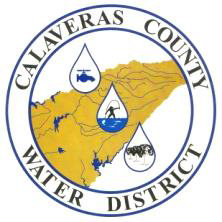San Andreas, CA….We just endured a four-year drought that was so severe, scientists had to go back more than a thousand years in tree ring records to find its equal. While the 2012-2015 dry spell may have been interrupted by a near-average winter in 2015-2016, and some reservoir levels have increased significantly, that doesn’t mean the state of California is out of the drought. And that’s why, even with our own drought-resilient water supply, the Calaveras County Water District is not letting its guard down when it comes to conservation.

Between the mandatory water conservation cuts ordered by Gov. Jerry Brown in June 2015 and the District’s expanded conservation program, the CCWD community reduced water use by 26% over the past year when compared to 2013 usage. This is especially impressive knowing that the state was requiring CCWD customers to conserve just 16% during most of that time span.
Such an achievement would not have been possible without the sacrifices made by the communities we serve, and we are grateful for their commitment to using water wisely and efficiently.
These savings were essentially accomplished through changes in lifestyle, many of which have now become permanent. Our customers have shown they are committed to repairing leaks quickly, installing water-efficient appliances, upgrading irrigation systems and replacing turf with drought-tolerant landscaping.
CCWD also thanks Gov. Brown and the State Water Resources Control Board for their leadership during this drought emergency. We are especially appreciative that the state has actively sought input from local water agencies, including CCWD, as new policy was created.
In 2015, the Governor ordered a 25% reduction in residential water use across the state. During the drought emergency, the state set mandatory conservation standards based on the amount of water used by each person, in each home, each day, i.e. residential gallons per capita day (R-GPCD). The higher the average daily water use, the higher the conservation standard mandated – up to a 36% maximum.
However, one of the shortcomings of this methodology was its failure to account for the actual local water supplies and conditions. Nor did it recognize longstanding efforts by agencies to create a drought-resilient water supply system. In CCWD’s case, even after four years of severe drought, we had adequate water to supply our customers, but nonetheless were mandated by the state to reduce consumption.
While we understand and respect the state’s decision to impose a statewide conservation policy during an emergency, we believe water management works best when it occurs at the local level. This is because local agencies and water resource managers know their water supply situations intimately, as well as their customers’ needs.
CCWD was pleased to learn that under new rules adopted by the state in June of 2016, last year’s state-mandated conservation targets have been replaced with locally appropriate measures. The new regulation recognizes that individual agency supply conditions and drought preparedness should be taken into account.
Like many agencies in the state, CCWD has conducted a rigorous “stress test” and determined that we are drought prepared, even if the next three years are critically dry.
This preparedness is no accident. It is the result of years of planning and investment in our drought-resilient supplies, as well as the commendable water use efficiency achieved by our customers. In fact, the District’s water savings were some of the most notable in the state.
While we have demonstrated to the state that our water supplies are adequate, we continue to rely on our customers to carry on with their water wise habits. Last year was about emergency actions. But this year we are not asking our customers to maintain those extraordinary measures. Instead, we have put in place a series of ongoing, common sense water waste prohibitions, consistent with mandated state regulations that will be enforced by CCWD in wet and dry years alike.
CCWD has permanently prohibited water-wasting activities, such as hosing down driveways, washing vehicles without a shut-off nozzle and irrigating outdoors within 48 hours of measurable rainfall. We know our customers are much more aware of how to use water efficiently than they were even a few years ago. Because of that, our system is even more drought resilient and our communities are even more secure, now and in the future. Like all good stewards of the resource, we at CCWD are always thinking of next year and beyond, because we know the next critical multi-year drought could start as soon as this winter.
CCWD will be here to diligently and responsibly assess conditions on an ongoing basis to ensure we currently have, and will continue to have, sufficient water supplies for our county’s future. In meeting that challenge, we know we can count on you, our customers, to stand shoulder to shoulder with us and not let our guard down on conservation.
In the final installment of this three-part series, learn about CCWD’s ongoing commitment to water use efficiency, and find out how the District is participating in the development of long-term California water policy.
Terry Strange is the President of the Calaveras County Water District Board of Directors. He can be reached at ccwddirectorstrange@volcano.net. The District holds board meetings that are open to the public at 9 a.m. on the second and fourth Wednesdays of each month at 120 Toma Court, San Andreas.


